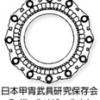this is how yo can make the inside visible. Sorry but this ukebari is seriously damaged due to it's age. Notice the skillful finishing of the rivets on the inside, the perfect carved mei, the high number of rivets per plate, etc...
All these fine details would be lost with a closed ukebari. Even important museums such as the Ueno in Tokyo are opening ukebari if they expect to find more information. This has nothing to do with destruction.


